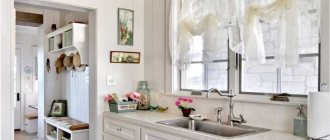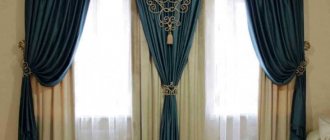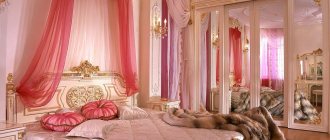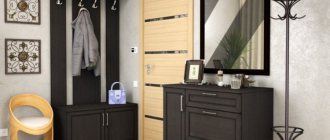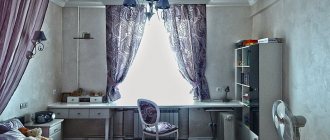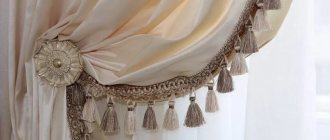History of the origin of tulle
Openwork lace fabric tulle appeared in France in the 15th century. It got its name in honor of the city of Tulle, where it was first invented by local weavers.
For the sake of his chosen one, who expressed a desire to be unidentified at the wedding, the French king issued a decree on the invention of an unusual fabric. The king's requirement was to make such material that, covering himself with it, he would be unrecognizable, but still see everything. Weavers from the city of Tul coped with the task.
The new manufactory pleased the king and his wife. At that time, the fabric was made by hand and was more like lace. It was not easy to purchase it, and only in the houses of the rich they used tulle to decorate their homes.
Tables were covered with tulle fabric; chests were later used as window curtains. Fabric began to be widely used in the 19th century. Tulle was used as a veil for the bride at a wedding, to decorate dresses.
Design styles
A variety of kitchen design options in different styles convey an emotional element and personal preferences when arranging a room.
Classic
Suitable for rooms of any size, but this style looks more advantageous in spacious kitchens, since the classics are long curtains, the length of which reaches the floor. When choosing colors, preference is given to light pastel colors, with possible small patterns.
Provence
The rustic French style is filled with romance and complacency. For him, it is important to design a window with the main tone of the curtains in light pastel colors, on which there is a bright floral print.
Modernity
Modern style presupposes freedom of choice both in colors, which can be made in any color scheme, up to a contrasting palette, and in the selection of patterns and prints, for example, various geometric shapes. The color can be solid, contrasting or with photo printing.
High tech
A modern style that combines practicality, simplicity and rigor, aimed at the use of high technology.
When decorating window openings, geometric colors or plain colors are preferred; curtains are equipped with mechanisms that simplify access to the window.
Composition of tulle fabric
With the improvement of technology, tulle from handmade lace fabric began to gradually transform into a light and airy fabric made from factories. At first, tulle fabric was made from simple threads of natural origin, then silk and synthetic fibers began to be added. The result exceeded expectations; the tulle turned out to be surprisingly light, transparent, airy and incredibly beautiful.
Tulle production is constantly in demand. The composition depends on the type of tulle.
The smooth material is dense and elastic thanks to polyamide threads. When applying a pattern to the canvas, viscose is used, complex nylon threads are used for the facing material. As a weighting agent - lead fiber for edging the tulle.
Tulle fabric is used for sewing elegant and wedding clothes, underwear, for bows and decoration. Curtains are the main use of tulle.
Organza
The first popular type of tulle is organza. Organza, durable transparent material. High-quality threads of viscose, silk, cotton and polyester organza give elasticity and rigidity.
This type of manufacture is popular among designers. The fabric is durable; organza with a printed pattern and unusual ornament looks original.
Kiseya
Kisey is a type of tulle. The material consists of polyester and natural threads of linen, silk and cotton. Such fabric components protect the room from excessive sunlight, add shine and strength. Kisea is easy to care for and washes easily.
Threads of muslin with a thickness of 1 to 10 mm. Polyester fibers are added to modern muslin tulle, which makes the fabric practical.
When to fit kitchen curtains at an angle
This form of curtain allows you to hide the errors of a window opening or decorate corner windows. Curtains of this cut are a non-standard solution to standard problems. They are very practical and at the same time allow sunlight to penetrate into the room. This is especially important when the kitchen is located on the north side.
Angled curtains add asymmetry to the interior, adding lightness on the short side and emphasizing details on the long side.
Even the smallest windows will visually look larger if you decorate them with curtains at an angle. They also look good with non-standard opening shapes.
Veil
Voile is a thin and light type of tulle. Soft transparent fabric with a different color palette made of polyester looks gentle on the windows. The veil consists of polyester with the addition of natural cotton and viscose. This fabric is less durable and short-lived and requires careful care.
Note!
Apron for the kitchen: TOP-130 photos of design and modern design- Kitchen in minimalist style: new designs for minimalist kitchens. Choice of colors, furniture and additional decor + 120 photos
Kitchen in the Art Deco style - TOP-190 photos of kitchen interiors in the Art Deco style + DIY stylish furnishing ideas
Material selection
The decorative element is sewn from several types of textiles. Organza is a transparent, airy fabric. Mesh with a perforated structure is also common. Lets light through. The disadvantage is the accumulation of dust.
The veil, which is also used to make tulles for the kitchen, is very delicate and easily deformed. Decorates openings, does not require additions. Kisey is a fabric made from individual threads. In the rooms it distinguishes different zones.
Based on the type of weaving, the material is divided into the following types:
- cambric - thin, long fibers, tightly twisted. Due to the same thickness, it is delicate and smooth. Often decorated with machine or hand embroidery. In the photo you can see the implementation of the idea. Dries quickly, easy to iron;
- chiffon - a fabric with a relief structure obtained by interlacing threads;
- jacquard is a multi-color fabric. The threads in the composition are different in thickness and color. Due to this, interesting shades and patterns are obtained.
Read here! Road rollers
Fact! The most difficult to sew are chiffon tulles. The material slides when cutting, which causes errors in length. If the edges are not processed, they will quickly crumble.
Ways to care for tulle
Caring for tulle should be carried out according to the instructions. When the tulle gets dirty, wash it with a mild detergent. First, the tulle is shaken off dust and soaked.
It is recommended to wash tulle curtains in warm water, do not twist them, and dry them flat. Hang thin curtains on curtain rods when wet. Do not wash in hot water on normal cycle in a washing machine. When machine washing, use the gentle cycle.
A saline solution will help remove the yellowness of the tulle. Soak washed curtains in a warm saline solution for 2 hours, then rinse. It is not recommended to place heating devices near a window with tulle curtains due to their easy flammability.
Royal luxury
To make the interior of a classic kitchen more rich and lush, pleated curtains, for example, in the French or Austrian style made of thick fabric, look great. The only drawback of rich theatrical curtains for the kitchen is their impracticality.
Alternatively, you can use these curtains, but in a very short version. They can be up to 50 cm high. This will enrich your interior and prevent the curtains from getting dirty. It is better to choose a golden color, but in a calm tone.
Tulle curtains for the kitchen
New curtains will help improve the interior of the kitchen and bring pleasure to the owners and guests. Among the many options, they often opt for tulle curtains for the kitchen.
Tulle will add freshness and elegance to the room, making you feel the comfort of home. The assortment on the market is constantly being improved, new original types of tulle are appearing.
Selection of colors
Many people prefer blinders in pastel colors - cream, sand, olive, pale blue, peach. They will suit any style, fill the atmosphere with airiness and expand the kitchen space.
Peach tulle curtain for a narrow window
To focus attention on the window, choose catchy shades - yellow, green, orange, red. If there are bright objects in the kitchen interior, then you can choose tulle to match them. Purple or turquoise look original.
Red chiffon lambrequin
For kitchens with windows located on the south side, choose tulle curtains in cool shades - blue, blue, mint, turquoise. White curtains decorate the windows facing north.
The most common color of 2022 is beige, mint, bright blue and all its shades. Beige is suitable for classic kitchens; it is more practical than white and adds comfort to the environment. No less popular is the sand shade, which is suitable for interiors with pastel colors, filling the atmosphere with positivity and cheerfulness. You can add a touch of spring to your decor with a mint shade of green.
Dark turquoise
Now the almond shade has become popular. It will not accentuate the window, but will help complete the kitchen design. The fashion trend is translucent material, devoid of patterns.
Patterned almond shade
In general, the color of tulle can be any. The main thing is that it matches the decor, for example, with other textiles - napkins, tablecloths, towels, potholders:
- White. A traditional color for window decoration, especially in a small kitchen. But when choosing white, it is worth considering that it is considered aggressive and looks better with a calm, light interior;
- Orange. Suitable for poorly lit kitchens and visually expands the space. Color improves appetite and also puts you in a positive mood;
- Green. Light, airy tulle will fill the atmosphere with spring freshness. Green is a natural color that is very calming to the human psyche;
- Blue. Fills the interior with lightness, as it is associated with a clear sky. Pairs best with olive, soft pink, apricot;
- Brown. The color is associated with aristocracy. But in combination with dark furniture it visually reduces the space;
- Red tulle accents the window. It should be combined with elements of the same color, for example, textiles, dishes;
- Pink. Suitable for kitchens decorated in Provence or country style. When choosing a pink color for curtains, furniture is installed matte or with a wood structure;
- Lilac. Suitable for creative and romantic people. Decorates the kitchen, creating a sophisticated interior conducive to conversations.
Room size
For a large and spacious kitchen, curtains made from long modern tulle and luxurious night curtains are suitable. It is more difficult to decorate a small kitchen; an individual approach is needed. Tulle on the window of a small kitchen will give you a pleasant feeling of coziness.
Vertical folds or strips of fabric placed from top to bottom will make the ceiling higher. A cornice wider than the window will hide frame defects and visually increase the space.
Options for attaching to the cornice
The choice of method of attaching the tulle to the cornice directly depends on the preferences of the interior owners.
Eyelets
They ideally hold any type of fabric without deforming the top edge, and allow the fabrics to fold into elegant flounces, which is especially important when choosing tulle for the kitchen-living room.
The photo shows short tulle with brown eyelets.
Rings
Tulle on rings looks no worse than on eyelets. But at the same time, rings represent an additional element of window decoration in the kitchen. Rings can be either the same color or combined.
Loops
Similar to strings, this fastening is suitable for any type of interior. Usually the loops are made of the same material as the tulle fabric, but sometimes you should choose a material that differs in color and texture.
Ties
You need to be careful when choosing this method of fastening. It is not suitable for all types of kitchen interiors. For example, if the room is decorated in a loft, modern classic or minimalist style, such a mount will be inappropriate. But it will fit well into more romantic interiors.
Lighting and interior
Kisey, pleated, chiffon will protect the kitchen from direct sunlight when the windows are located on the sunny side. If there is a lack of daylight, use a white tulle mesh or veil.
In a small room with a lot of furniture and kitchen utensils, the first thing to do is arrange the furniture correctly and free up space. Move the stove away from the window to prevent accidental ignition of the curtain.
The fabric chosen is durable, practical, and stain-resistant. The tulle should be easy to care for, as there are constant smells of cooking food, soot and fumes in the kitchen.
The second stage is the design of tulle for a small kitchen. Long curtains are inappropriate in a small kitchen, as they interfere with frequent cleaning and get dirty. Tulle looks great in a small kitchen, matching the interior of the room.
You can hang short tulle with colored patterns in a classic style, blocking visibility from the street.
The oblique tulle looks asymmetrical and emphasizes the look of the interior.
A tulle fabric consisting of two panels with original tie-backs on the sides in the form of bows, butterflies or ropes will create a homey feel. Cross curtains look unique.
When the window is freely positioned, tulle with lurex looks elegant, charming, sparkling and beautiful.
Lightness, excellent tulle design, in the form of an arch, will make the kitchen fabulously attractive. To avoid accumulating excess dust and soot, tulle curtains with fringes and pleats are not advisable in the kitchen.
For a small kitchen with sufficient daylight:
The fabric should be durable and comfortable, easy to wash, not accumulate dust, block excess sunlight, and protect the room from the prying eyes of passersby.
For these qualities, pleated or blue or lilac muslin is suitable. Placed crosswise, such tulle on a window will delight you with freshness and a feeling of pleasant coolness.
It has no equal, a new tulle with photo printing that will fit majestically into the interior of a small kitchen.
When the window is located on the north side, white transparent tulle is recommended for the kitchen. A mesh, an arrangement with patterns or ornaments, made in the form of an arch, in harmony with the interior will make the kitchen bright and free, giving airiness and lightness to the room.
These are advisory tips, and the advantage in choosing tulle for the kitchen is always with the hostess.
Kinds
Tulle manufacturers offer a huge selection of texture materials.
Net
It looks beautiful on the window in combination with curtains or other modern materials. It is not recommended to use a material with a mesh texture without an additional background, since it will not protect the kitchen from either sunlight or prying eyes.
Cobweb
It is very durable, despite its visual weightlessness. Made from silk or synthetics. Does not require ironing after washing. You can use cobwebs either alone or in combination with other types of fabric.
Rain
Modern designers recommend using this type of fabric in bright interiors to highlight contrasting accents and calm the overall background.
Pleated
It has the amazing property of transmitting light and blocking sunlight. It is an ideal solution for south-facing windows. Doesn't wrinkle at all.
Thread
Does not require ironing and retains its original shape for a very long time. If desired, you can decorate such canvases with contrasting beads.
See what thread curtains look like in the interior.
